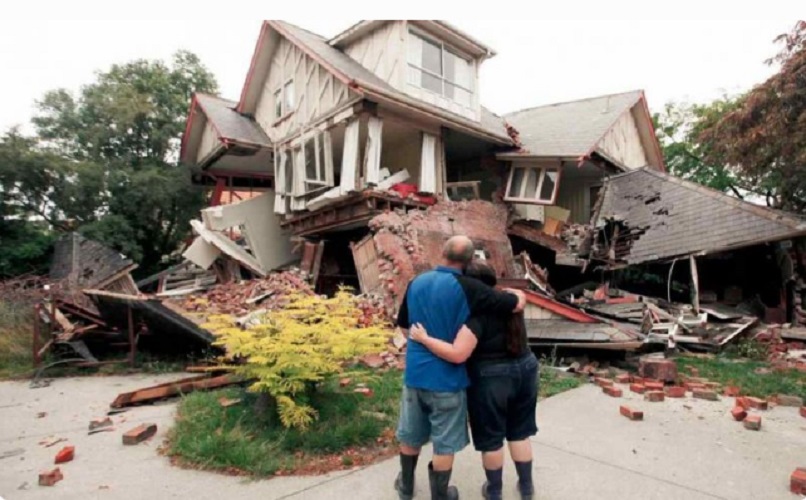What is an earthquake?
We explain what earthquakes are and what types of earthquakes exist. What are its causes and consequences. Tidal waves
-
What is an earthquake?
It is called earthquake (from the Latin terre : “earth”, and motus : “movement”) or also earthquake, earthquake, tremor or telluric movement, to an episode of violent and temporary shaking of the earth’s crust , the result of the sudden release of energy (seismic wave) in the subsoil, where certain geological phenomena occur, such as faults, volcanoes or frictions between tectonic plates.
An earthquake has an underground focus or point of origin, known as the hypocenter , and a point on the surface directly above the focus, called the epicenter, where the greatest intensity of movement usually occurs . In almost all cases, after the tremor, earthquakes of much less intensity occur , known as aftershocks .
The magnitude of the force of the movement is usually measured according to the Richter Scale , a record of the local magnitude of the tremor that ranges from 2.0 (imperceptible daily micro tremors) to 10 (never recorded).
This type of seismic events are manifested recurrently, on a cyclical basis, according to the movement over the centuries of the tectonic plates of the subsoil, and to the processes of change characteristic of the earth’s crust. Seismologists are dedicated to the study of earthquakes and to calculate their chances of repetition over time .
Earthquakes have occurred since time immemorial and have always transmitted to the human being an impression of the gigantic forces of nature , insofar as they have caused tragedies and generated secondary catastrophes.

-
Earthquake Types
Usually three different types of earthquake are considered, according to the region of the crust in which its hypocenter is located:
- Superficial . They have a focus not less than 70 kilometers deep, thus having a greater impact on the surface. This makes them the most devastating of earthquakes.
- Intermediate . Its focus ranges between 70 and 300 kilometers deep.
- Deep . Events that occur deep in the Earth, usually outside the lithosphere, more than 300 kilometers from the surface. Called bathysis, they are usually imperceptible.
-
Causes of an earthquake
A tremor can respond to various causes, natural and of human origin:
- Geological processes . The Earth’s tectonic plates move beneath the surface, over the magma, and often collide with each other, generating seismic waves that impact the surface. This can also occur in the presence of volcanic activity.
- Geothermal installations . The human hand can also accidentally cause tremors, as occurs with the microsisms that often occur when cold water is injected into geothermal deposits, where the heat of the earth boils the liquid and produces geysers.
- Fracking . There is debate about the possibility that the methods of hydraulic fracturing or fracking , consisting of the injection of water and chemical materials into hydrocarbon wells to increase or propitiate the extraction of valuable matter, can increase the seismic instability of the area and cause earthquakes
- Nuclear tests . Atomic weapons tests are so destructive that they must be done away from human and wild life, so they are often carried out underground. These explosions are so strong that they can affect the tectonic plates and transmit vibrations that cause small earthquakes.
-
Consequences of an earthquake
Earthquakes can have various consequences, such as:
- Urban destruction . The fall of buildings, the collapse of houses and other urban accidents usually accompany the vibratory movement of tremors, and usually charge a high price in human lives, especially if the population is not prepared and educated in seismic matters.
- Landslides . Elevations such as hills, hills and mountains can yield to the strength of the earthquakes and thus generate avalanches or avalanches capable of burying entire populations
- Fire . The fall of urban or industrial facilities often causes electrical damage or the release of flammable chemicals, which usually generates fires.
- Soil liquefaction . The seismic waves are so strong that they can force the soil material to release the contained water, losing solidity and becoming muddy, which is lethal to the stability of houses and buildings.
- Tsunamis . Large earthquakes can transmit their vibrations to the water of the oceans , thus generating an artificial agitation of it and then large waves known as tsunamis.

-
Seaquake
It is known as a tsunami or tsunami for the purpose of transmitting the seismic waves of an earthquake to the water of the oceans , producing an initial withdrawal and then a gigantic wave that can travel several kilometers and crash on the coast, depending on how much energy is released by the initial earthquake. It is one of the most feared and devastating effects of tremors, and the “tsunami warning” is usually after the end of the great earthquakes.




